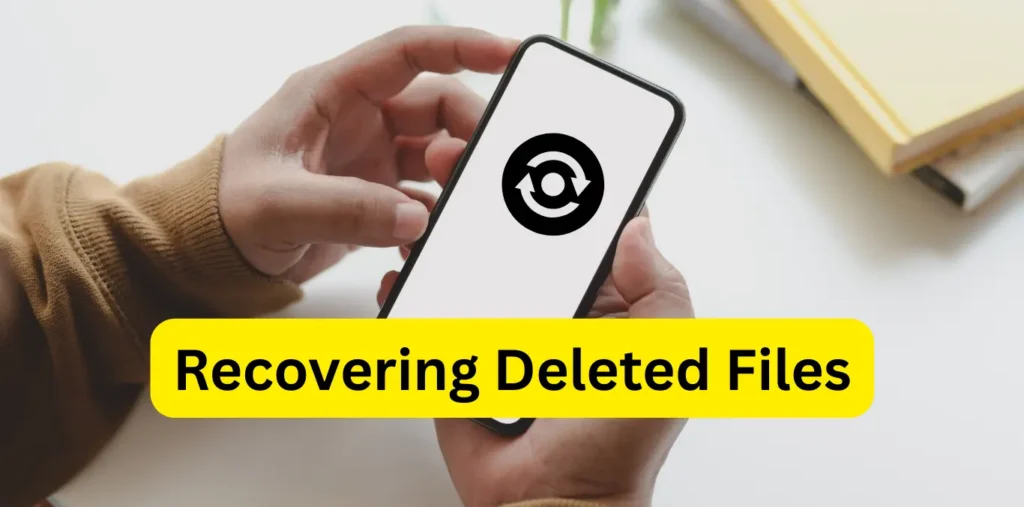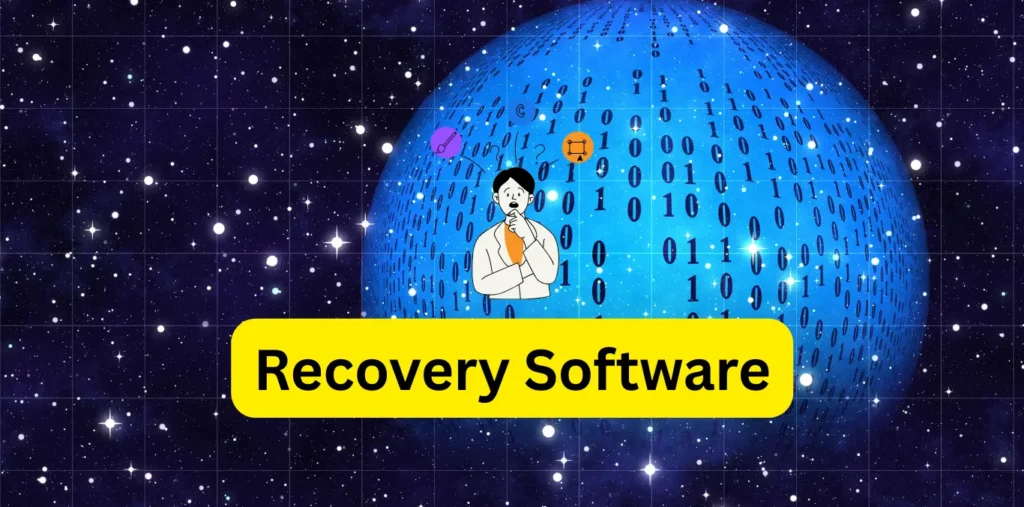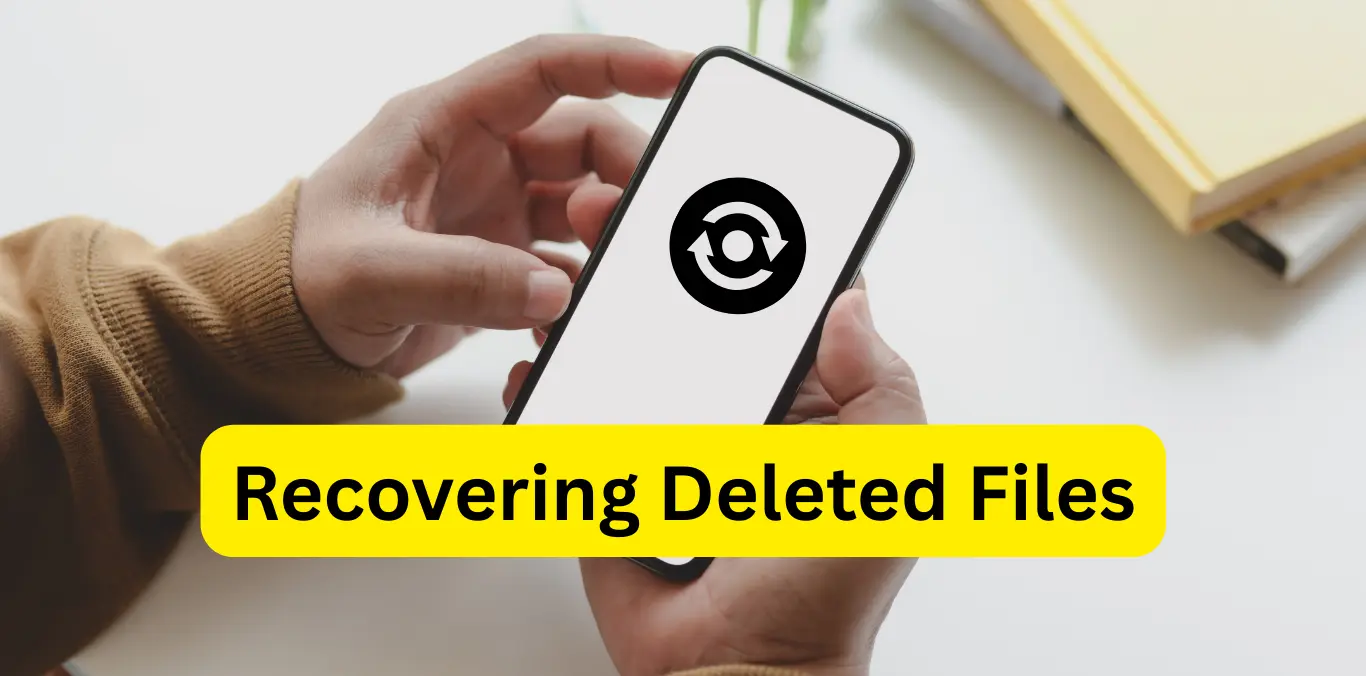Often, we make a mistake that causes us to lose our data, and then we realise later that we wish we hadn’t done it, or there is a problem with our computer that causes us to lose our valuable files. Valuable data, such as pictures, videos or some documents that may be important to us, is accidentally deleted by us.

While permanent data loss is stressful, some tools may help recover files, though success depends on your specific situation, and success isn’t guaranteed. In this article, we will guide you on how to recover deleted files.
Contents
First Place to Look: The Recycle Bin (Windows) or Trash (Mac)
Inside Windows computers and on Mac computers, there is a folder called the Recycle Bin. Whenever you delete a file, it does not completely disappear from your system, but rather goes into this special folder. In that case, if you want that file back, you can go to this folder and recover it.
How to Check:
- Windows: To find this folder in Windows, go to your desktop and you will see a basket-like folder there. Double-click on it, and it will contain all the files that you have deleted. You can recycle them by left-clicking on them and clicking on the restore option, which will return all these files to the same location from where you deleted them.
- Mac: Find the “Trash” icon in your Dock (usually at the bottom of the screen). Click it to open. Drag the file you want to recover out of the Trash, and it will return to where it was before you deleted it. You can also right-click (or Control-click) the file and choose “Put Back.”
Important Note: If you empty this folder too, it becomes difficult to recover these files.
What Happens When the Recycle Bin or Trash Is Empty?
Even if you delete files from the Recycle Bin and Trash folders, they are still present somewhere in your computer’s storage, whether it’s on your hard drive or SSD drive, but it becomes difficult to recover them; it is still possible.
This is the step where you need software to recover deleted files that analyses all the storage of your system and finds files that you have deleted, meaning you no longer need them and have also removed them from the recycle bin.
Using File Recovery Software (Be Cautious!)
There are many file recovery software programs available. Some are free, and some you have to pay for. If you decide to use one, it’s important to be careful:

- Download from Reputable Sources: Whenever you go to download software, download it from a trusted and official website so that your computer does not get any kind of virus or problem.
- Read Reviews: Whenever you have downloaded this software, check its reviews. Wherever you have downloaded it, people will have given reviews about this software, what this software is and how many people have downloaded it. Is it really useful and fulfils the need? Download it only after checking the reviews completely.
- Be Realistic: File recovery software doesn’t always work. The longer it’s been since you deleted the files and the more you’ve used your computer since then (writing new data), the lower the chances of successful recovery.
Examples of Commonly Mentioned (but remember to research and choose carefully):
- Recuva (Free and Paid Versions)
- EaseUS Data Recovery Wizard (Free and Paid Versions)
- Disk Drill (Free and Paid Versions)
Important Reminder: Remember that we have told you this for information only. We do not suggest that you use only these applications. You have to do the research yourself. You have to see your requirements. You have to check the reviews of all these applications, and after that, you have to use them only after checking everything.
These examples are for illustration only. Always research independently before downloading any software.
What to Do Immediately After Deleting Files
Whenever you realise that you have deleted any of your valuable files by mistake, then in that case, stop using your computer for the time being, because whenever you work on your computer after that, that computer will keep showing new data, and your deleted files may be overwritten by new data.
- If you need to download recovery software, do it on a different computer and then transfer it to the affected one using a USB drive.
- If you’re trying to recover files from an external drive, disconnect it immediately after realising the files are gone.
When Recovery Might Not Be Possible
Unfortunately, there are some files that, once deleted by you, cannot be fully recovered. For example, they may be permanently deleted from your access folder or trash folder. Or, if you accidentally press the Shift-Delete button at the same time, they will not go to the recycle bin. If they are permanently deleted, it is difficult, if not impossible, to recover them.
Protecting Your Files in the Future
The best way to avoid the stress of trying to recover deleted files is to take steps to protect them in the first place:
- Be Careful When Deleting: Whenever you delete a file, double-check that you are deleting the file you intended to delete, so that you are not accidentally deleting any of your valuable files.
- Regular Backups: Keep taking regular backups of your files, for example, on a separate storage hard drive or USB. Be sure to keep a backup of whatever files you think are valuable to you.
- Use Cloud Storage: Services like Google Drive, Dropbox, and OneDrive automatically save your files in the cloud, making them less likely to be lost due to local issues.
Conclusion:
Oftentimes, we lose valuable possessions that can cause us distress. But by understanding the recovery options and acting quickly, you might be able to get them back. We have given you some steps in this article that you can follow to recover your files and use tools that are used to recover deleted files, but you should check them thoroughly and see their full reviews on how and where to install them, so that your privacy is maintained.
FAQ:
Are permanently deleted files gone?
When you permanently delete a file, it is deleted from your device’s recycle bin and the trash, but there are still some special software programs through which you can recover it.
How old can deleted files be recovered?
If your file has been deleted for a long time, it is difficult and usually impossible to recover it. If your file has been deleted for a few days or months, it can be recovered.
Is Recuva free?
Yes, it provides its free version in which you can
Founder & Tech Enthusiast | TechMalik.com
With 10+ years of tech industry experience, I created TechMalik to share honest gadget reviews, practical tech guides, and app insights. My mission is to simplify technology for everyday users while keeping professionals informed.

